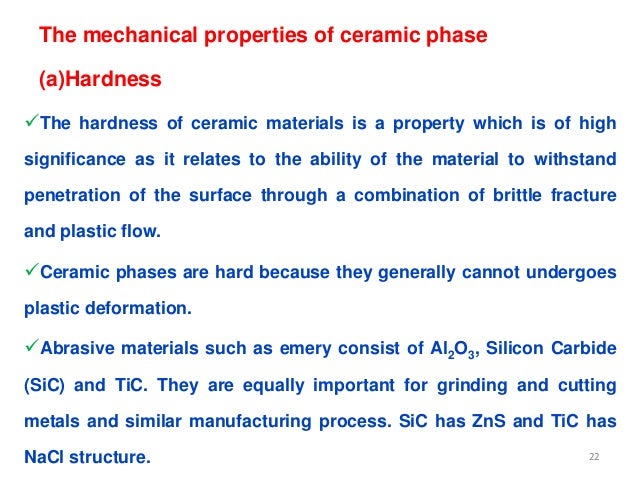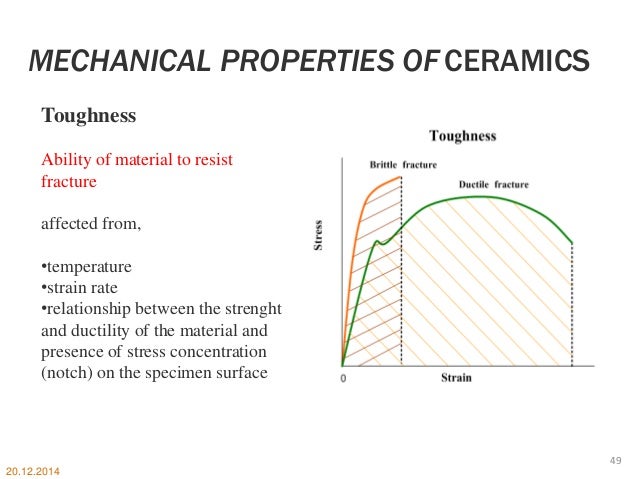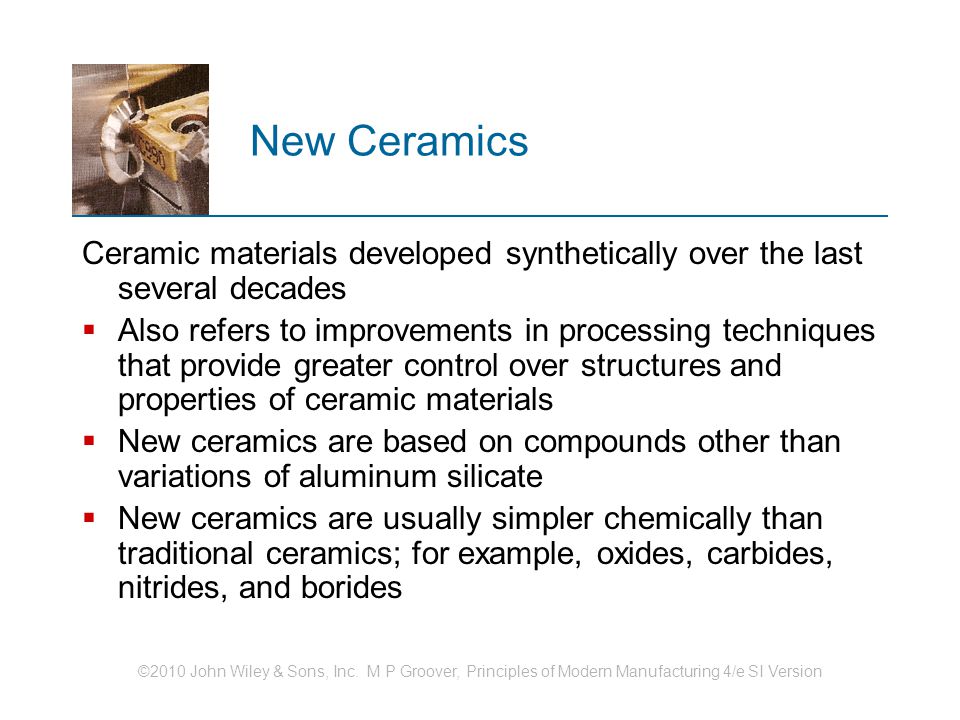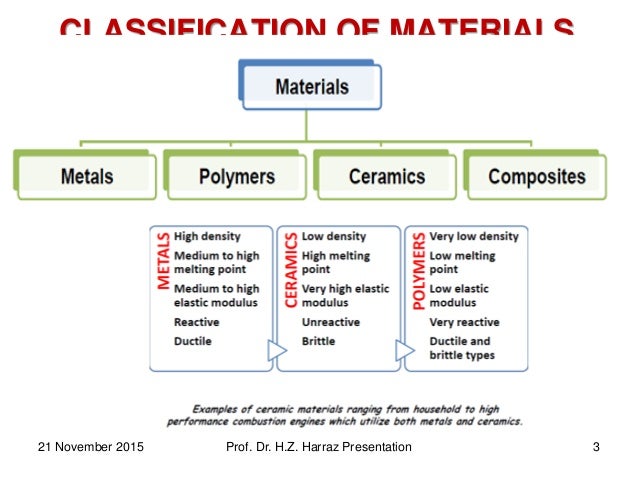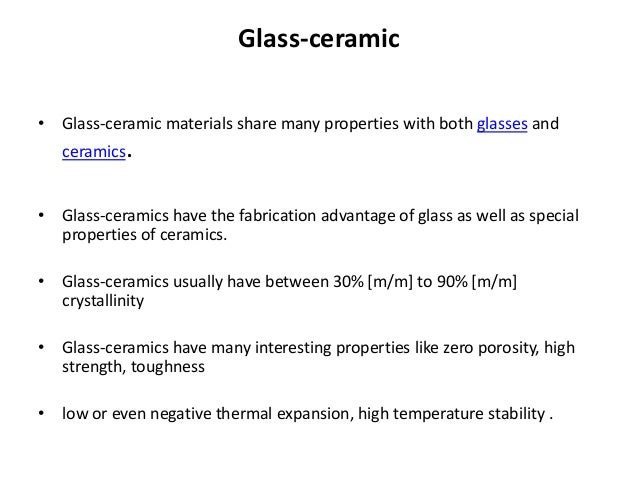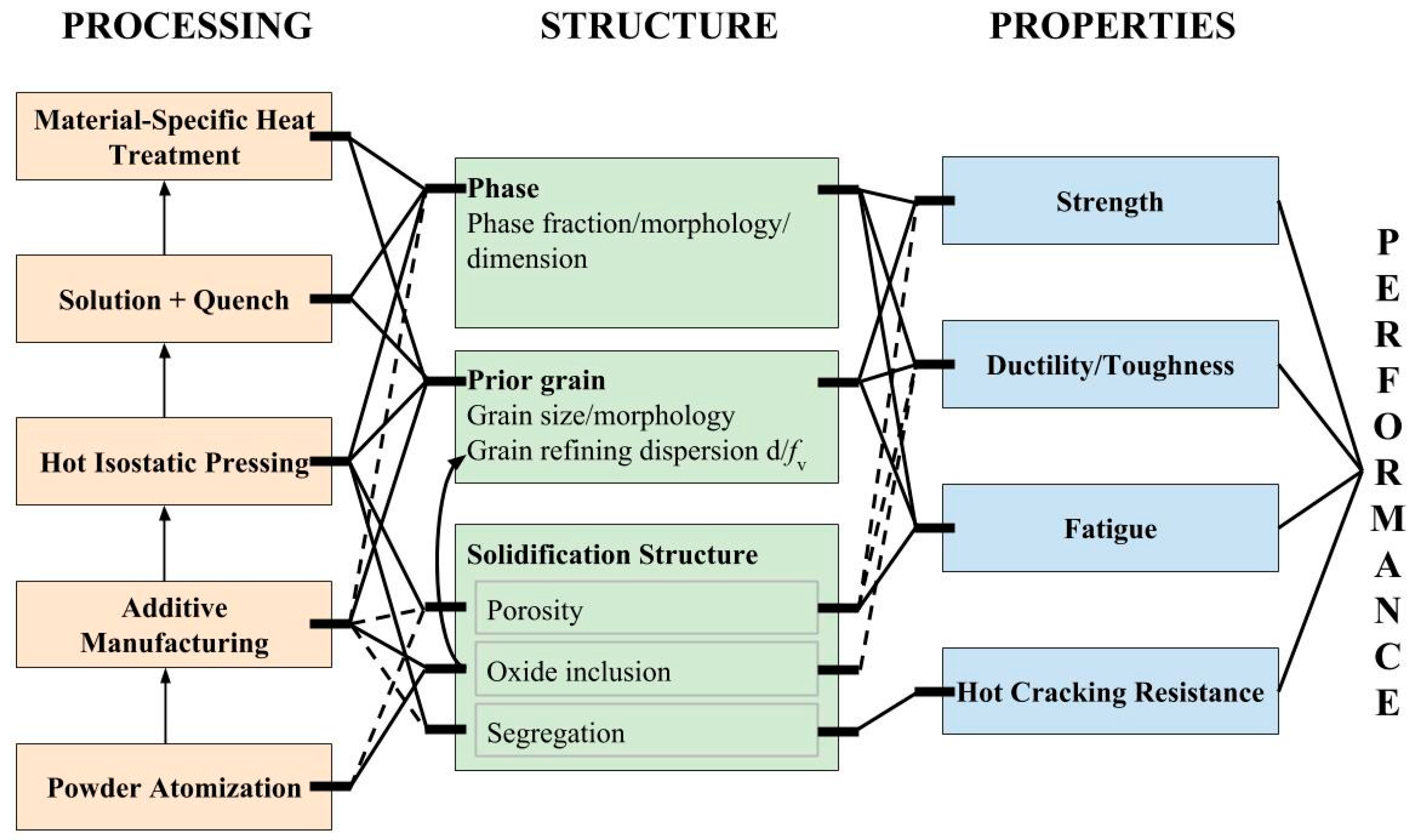Structure And Properties Of Ceramic Materials

Electronic structure and atomic bonding determine microstructure and properties of ceramic and glass materials.
Structure and properties of ceramic materials. Just like in every material the properties of ceramics are determined by the types of atoms present the types of bonding between the atoms and the way the atoms are packed together. Generally ceramic particles are fine and coarse. It is the primary bonds in ceramics that make them among the strongest hardest and most refractory materials known. They withstand chemical erosion that occurs in other materials subjected to acidic or caustic environments.
These are very important parameters for the ceramic material. Dental ceramics are usually composed of nonmetallic inorgani c structures primari ly co ntaining compo unds o f oxy gen w ith o ne or mo re me t all ic o r semi met allic ele ment s. All ceramic materials are prepared by ceramic technology and powder substances are used as the initial raw materials. Some elements such as carbon or silicon may be considered ceramics ceramic materials are brittle hard strong in compression and weak in shearing and tension.
Additionally carbon based materials such as carbon fiber carbon nanotubes and graphene can be considered ceramics. A common definition of a ceramic is a hard material that is held together with ionic and covalent bonds. Structure and properties of ceramics. Crystalline materials have high density than non crystalline materials.
It exhibits the highest mechanical strength and toughness at room temperature. Zirconia ceramics have a martensite type transformation mechanism of stress induction which provides the ability to absorb great amounts of stress relative to other ceramic materials. Thus in order to fully understand the properties of ceramics a knowledge of their structure is essential. We determine the above all properties with the particle sizes of the material.
Fundamental information on the bulk properties of biomaterials basic level to enable understanding of metallic polymeric and ceramic substrates in the next few classes we will cover. In figures 2a through 2d representative crystal structures are shown that illustrate many of the unique features of ceramic materials. Typical zirconia zro 2 properties. Graphene is currently considered the strongest known material.
Ceramic materials i 5 structure percentage of ionic and covalent character of the bond for some ceramic materials determines the crystalline structure ceramic material atoms in bond x a x b ionic character covalent character mgo mg o 2 3 73 27 al 2o 3 al o 2 0 63 37 sio 2 si o 1 7 51 49 si 3n 4 si n 1 2 30 70. The density of ceramics is intermediate between polymers and metals. Crystal structure stress strain behavior creep fracture fatigue and wear of materials. A ceramic material is an inorganic non metallic often crystalline oxide nitride or carbide material.
Introduction to material properties new focus on.

